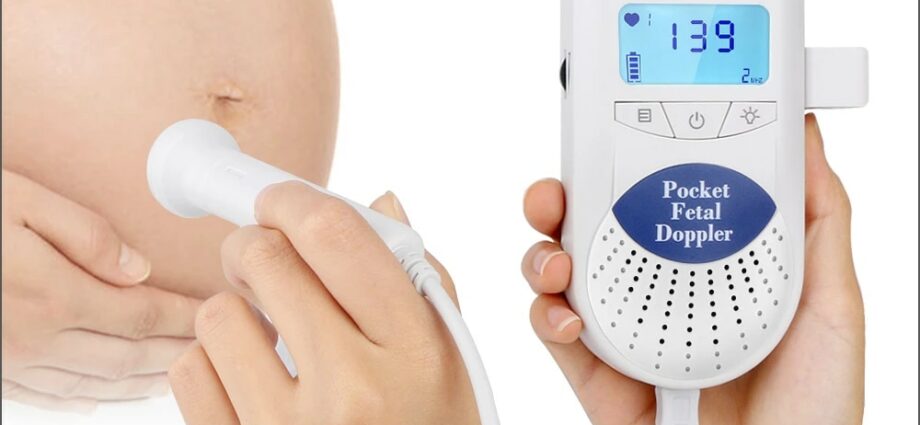Contents
The fetal doppler
What is fetal doppler?
Doppler is a medical imaging technique using ultrasound. It looks like an ultrasound: a probe coated with jelly is placed on the belly of the mother-to-be. But unlike ultrasound, Doppler does not provide images but sounds. It works like a radar or sonar: the sound waves have a frequency and when they are reflected on a moving surface (the baby’s heart, the umbilical artery, etc.) this frequency varies. The frequency variation gives rise to a sound which is transcribed on a graph. The Doppler thus makes it possible to measure the blood flow in different veins and arteries of the baby and the mother. Available today in color, it allows an even more precise blood flow analysis.
What is it used for?
The fetal Doppler makes it possible to monitor the baby’s development and vitality in a more in-depth manner than ultrasound by checking that his organs are properly irrigated. It is both a diagnostic tool (detecting a problem), a tool of etiology (detecting the cause of this problem) and a tool for monitoring and prognosis for the growth of the fetus. The fetal Doppler is not systematically used in the monitoring of pregnancy but only in the face of certain signs of complication in the mother or the baby or in the event of pregnancy considered to be at risk (1) (2). That is :
- gestational diabetes
- hypertension or preeclampsia (which can lead to placental insufficiency)
- fetal distress, fetal anemia
- growth retardation in utero (IUGR): to detect it urgently, monitor its progress if it is already known and or look for its causes (especially vascular)
- an abnormality of the amniotic fluid (oligoamnios, hydramnios)
- fetal malformation
- a monochorial pregnancy (twin pregnancy with a single placenta)
- pre-existing maternal disease (hypertension, lupus, nephropathy)
- a history of obstetric vascular pathologies (IUGR, pre-eclampsia, placental abruption)
- history of death in utero
The different types of fetal doppler
Depending on the indication, different types of Doppler can be used:
- the umbilical doppler measures the blood flow in one or both umbilical arteries. It thus provides information on the good quality of exchanges between the fetus and the mother via the placenta. With the measurements taken by ultrasound (biometrics), the umbilical Doppler data makes it possible to follow the good growth of the fetus. It is therefore generally performed in case of IUGR or in pregnant women at risk of IUGR. It also helps to monitor fetal well-being in monochorial pregnancy.
- uterine Doppler controls blood flow in the uterine arteries. It is generally performed at the same time as the second ultrasound in the event of an obstetric history of hypertension, placental abruption, IUGR; hypertension, kidney disease, or IUGR. It can detect fetal distress, IUGR and its causes as well as the risk of maternal vascular complications.
- the brain Doppler measures the blood flow in the brain arteries of the fetus (usually the middle cerebral artery). It is used to assess fetal distress, especially in the event of hypoxia (lack of oxygen). It is performed in the event of a history of pathological pregnancy, maternal hypertension or if the umbilical and / or fetal Doppler has shown an abnormality. He will then confirm and refine these initial results, and provide a prognosis on the IUGR.
What about fetal dopplers at home?
In recent years, home fetal dopplers or “pocket dopplers” have been found on the market. They allow you to listen to the heartbeat of the fetus from 12 weeks of pregnancy, thus promising parents to be reassured about the well-being of their baby. Health authorities have not issued official recommendations on them. However, following the fashion for “commercial ultrasounds”, the ANSM (formerly AFSSAPS) recommended that pregnant women not unnecessarily expose their fetus to ultrasound (3). The message was picked up by various scientific bodies (French College of Fetal Ultrasound (4), National College of French Gynecologists and Obstetricians (5)). Knowing that pocket dopplers also emit ultrasound, their use should therefore also be avoided. In addition, the use of these devices can have an anxiety-provoking effect on parents because depending on the baby’s position, the heartbeat may not be heard on Doppler.










